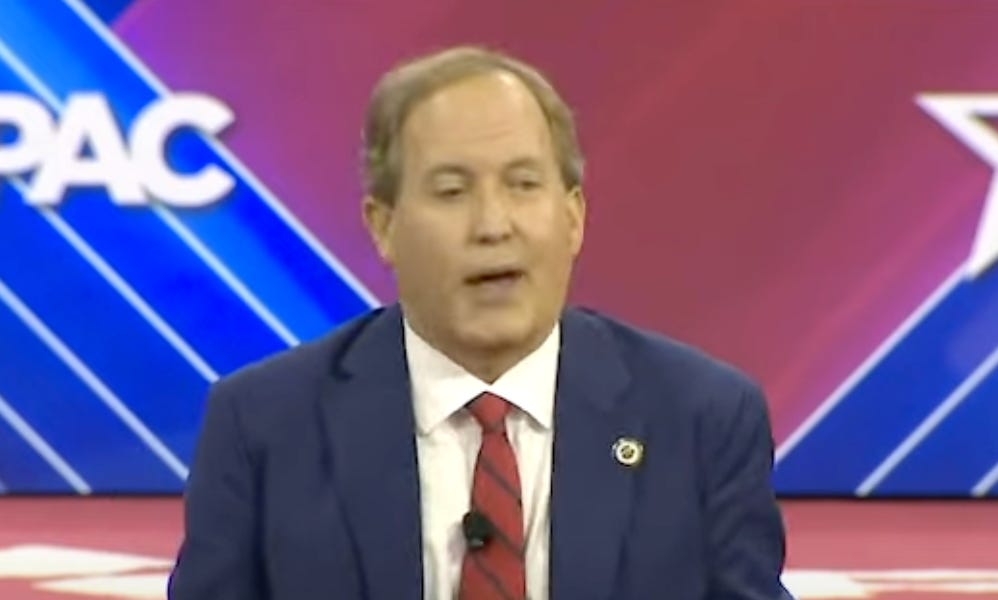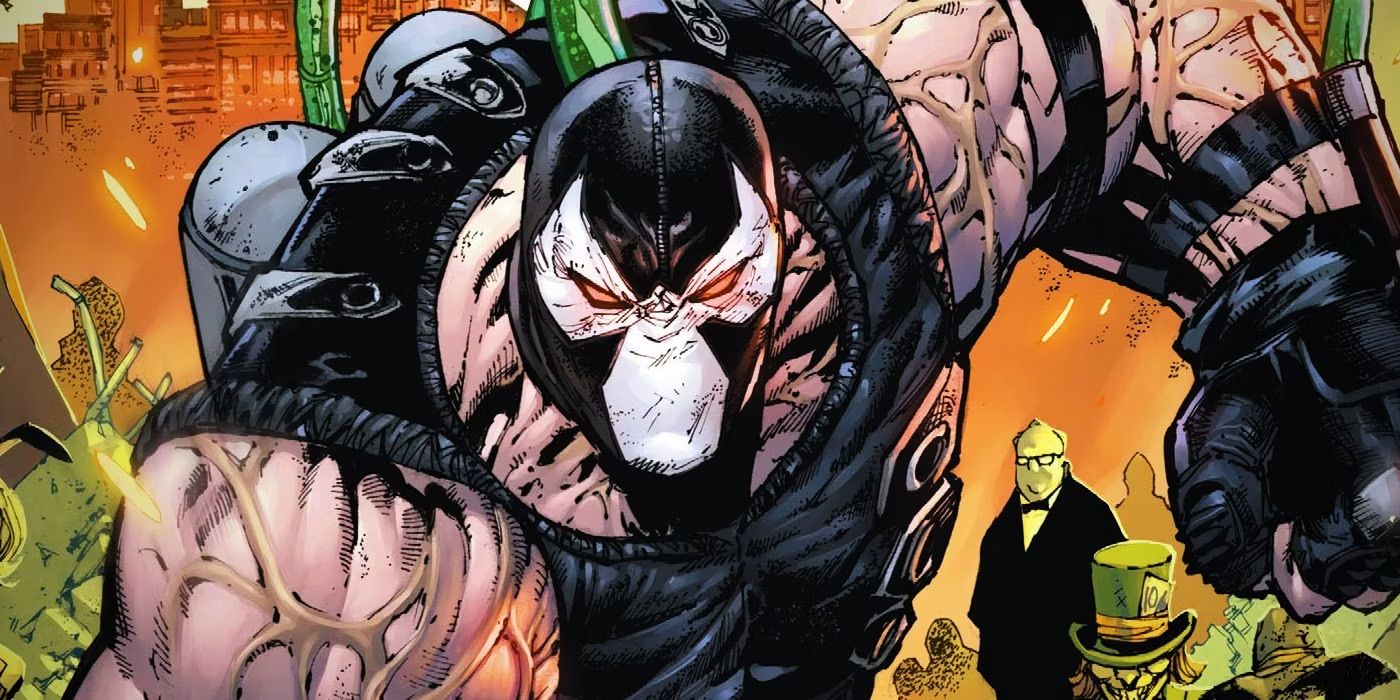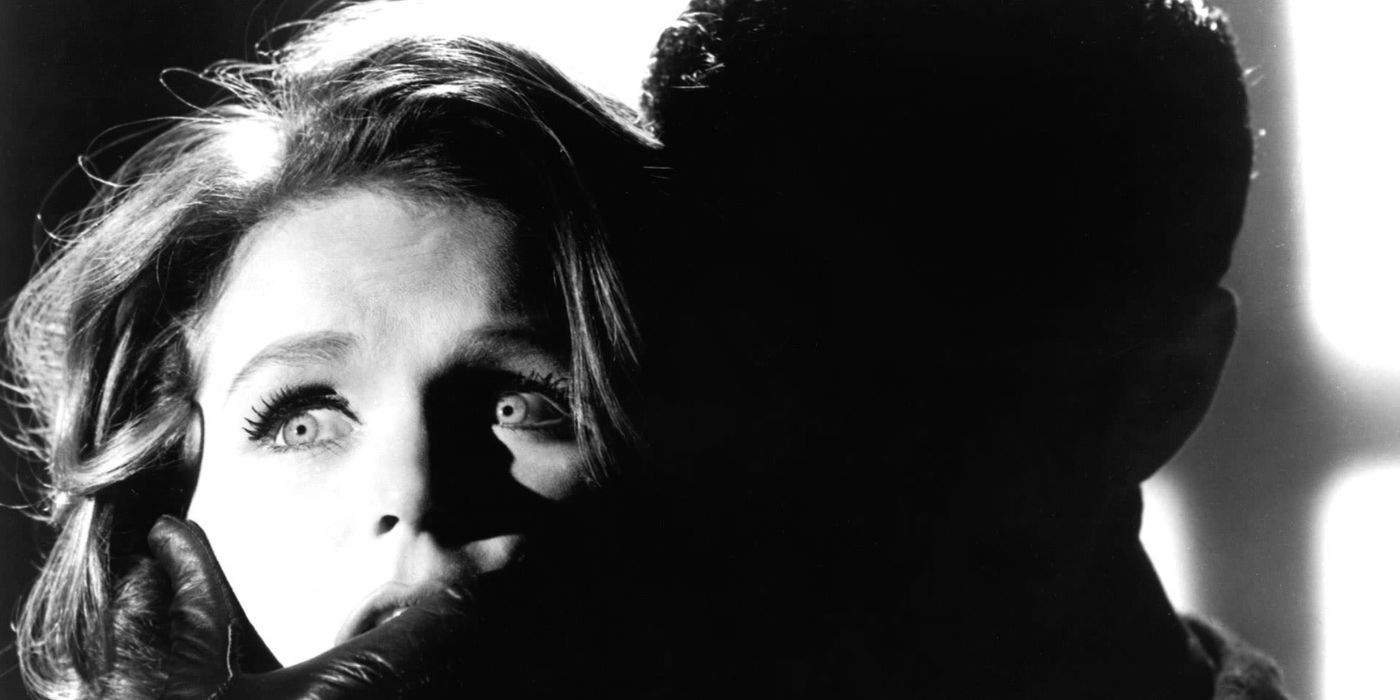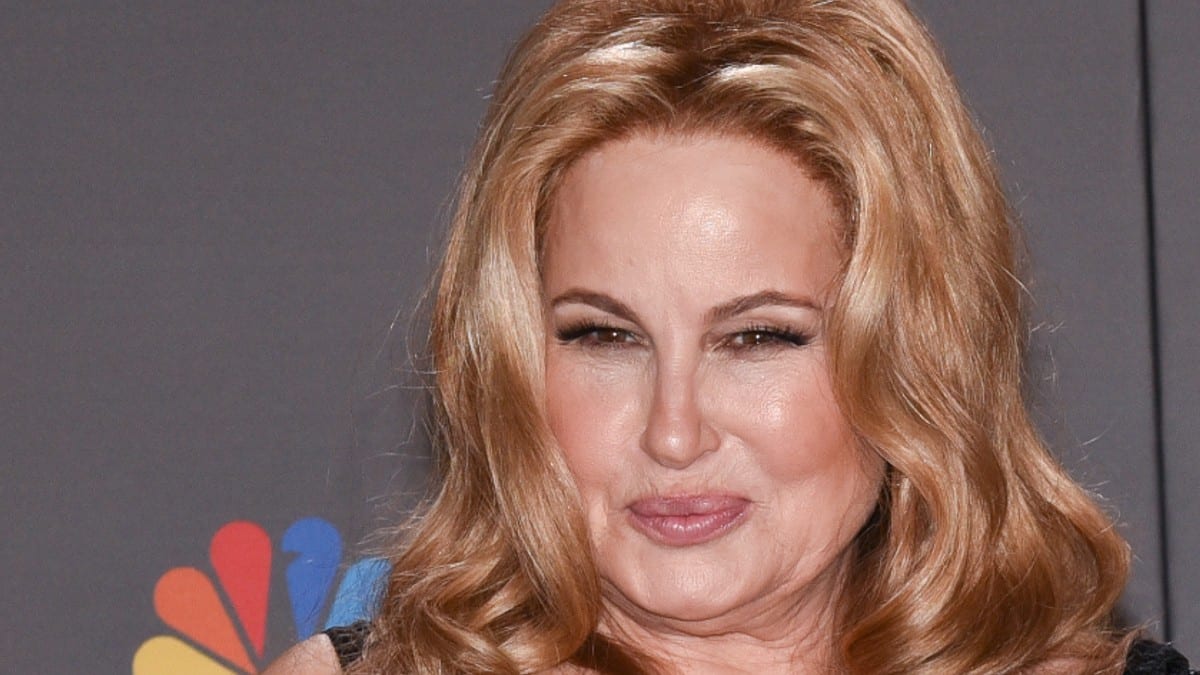The Big Picture
- Experiment in Terror influenced David Lynch’s signature style, with similarities in its atmospheric score and setting to Twin Peaks and Blue Velvet.
- The film’s themes of psychotic killers, perverse acts, and hidden secrets mirror those found in Lynch’s work, like Blue Velvet and Twin Peaks.
- Red Lynch, the villain in Experiment in Terror, draws parallels to characters in Lynch’s films, such as Frank Booth in Blue Velvet and Bobby Peru in Wild at Heart.
David Lynch has one of the most unmistakable stylistic fingerprints in modern cinema, with his influence being prevalent enough to warrant the word “Lynchian” in the Oxford English Dictionary (your move, Merriam-Webster). Still, as original as Lynch and his films are, they draw from a certain pool of inspirations — his noir-tinged worlds of insidious criminals hiding in the undergrowth of small towns and American suburbs, specifically his monumental Twin Peaks, owe a certain debt to Blake Edwards’ excellent 1963 noir flick Experiment in Terror.
This brooding, atmospheric neo-noir follows Kelly Sherwood (Lee Remick), a young woman who’s psychologically terrorized by an asthmatic killer named Garland “Red” Lynch (Ross Martin) and coerced into committing a theft from the bank she works at. It’s an excellent film, definitely among the most unjustly overlooked noirs, and its no surprise that Lynch took inspiration from it. Arguably the most essential figure in popularizing postmodern surrealism in modern cinema, Lynch essentially wrote his own film language, but it was movies like Experiment in Terror that Lynch consumed and transformed into something far weirder, beautifully so.
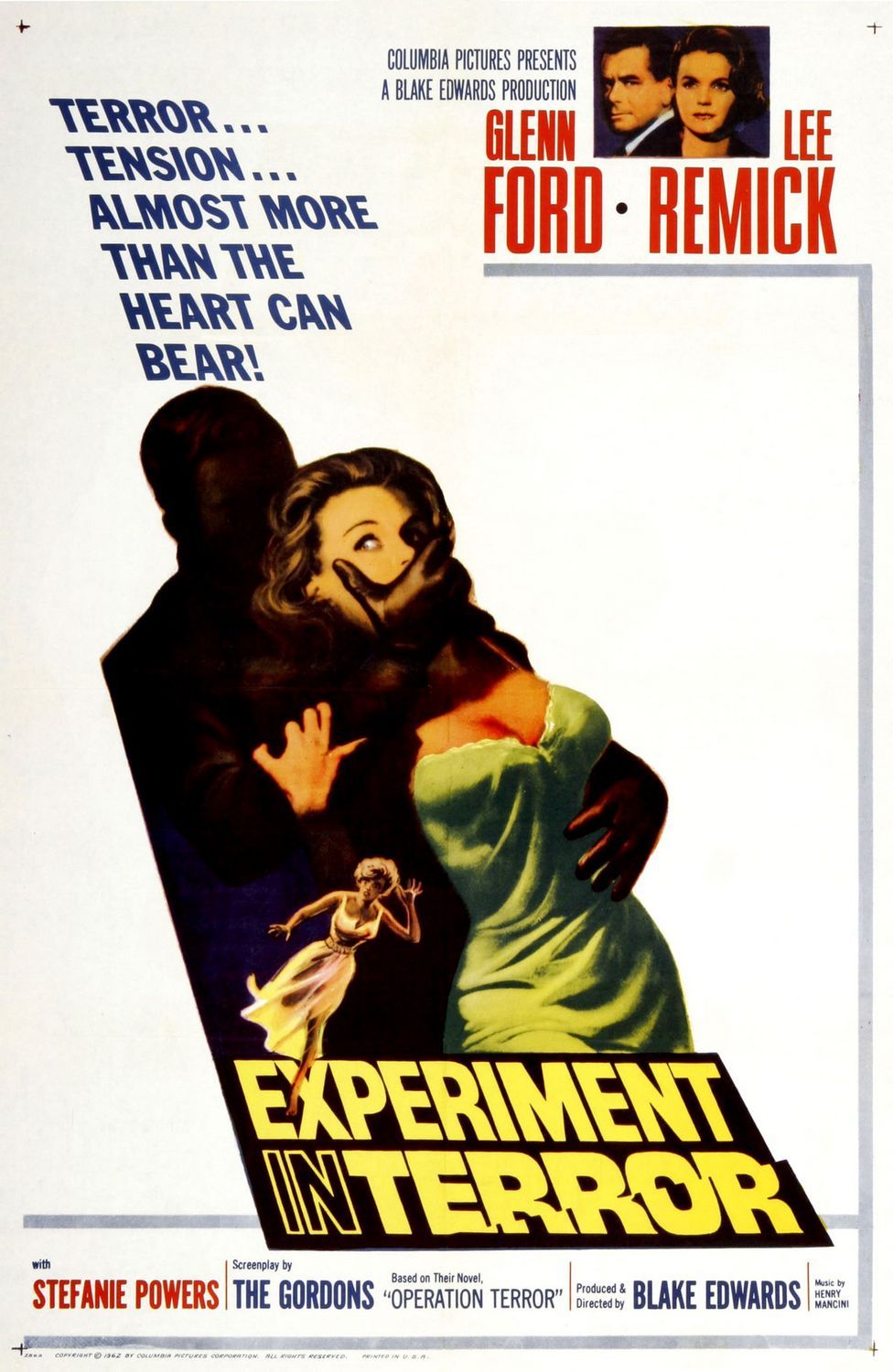
Experiment in Terror
A man with an asthmatic voice telephones and assaults clerk Kelly Sherwood at home and coerces her into helping him steal a large sum from her bank.
- Release Date
- May 1, 1962
- Director
- Blake Edwards
- Cast
- Glenn Ford , Lee Remick , Stefanie Powers , Clifton James
- Rating
- Not Rated
- Runtime
- 123 minutes
How Did ‘Experiment in Terror’ Influence David Lynch?
Searching for Lynchian tones in Experiment in Terror, you’ll need to look no further than the film’s opening few minutes. Over the opening credits, the smooth and jazzy score from Henry Mancini feels like a forgotten cut from the scores for Twin Peaks or Blue Velvet. The slow, twangy guitar tones that sound like darkly distorted surf rock sound like close relatives to those heard when The Arm breaks off into his bizarre dancing spells in the Red Room. Angelo Badalmenti’s score for Twin Peaks is one of the most iconic television soundtracks of all time, a rich tapestry of otherworldly sounds and tones that transcends time, and traces of it can be found here nearly 30 years earlier.
There’s also the film’s setting, established at the tail end of the credits as Kelly drives past a plain sign directing her towards suburbs called Twin Peaks. This one is in what’s unmistakably San Francisco, instead of Washington state like Lynch’s. The killer’s name, Garland “Red” Lynch, quite possibly influenced that of Major Garland Briggs (Don S. Davis) from Lynch’s series.
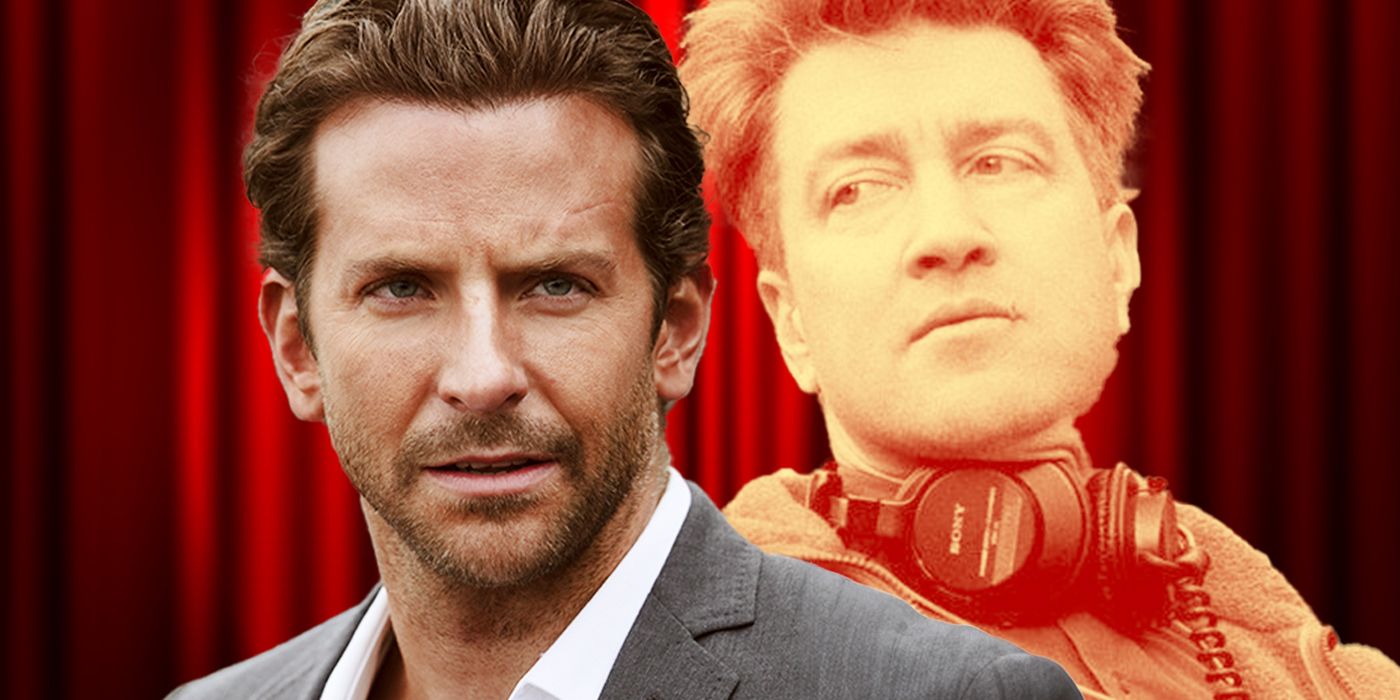
The David Lynch Movie That Inspired Bradley Cooper To Become an Actor
He is not an animal! He is a human being. He is Bradley Cooper!
Even more than that, though, is the style of the film that’s most clearly an influence on Lynch. It’s got many of the themes that Lynch made his own, from the psychotic killer set on terrorizing young women, the attempted perversion of said innocent young women at the hands of men, and the disturbing secrets hidden underneath a seemingly peaceful town. In Experiment, a young and innocent onlooker is pulled into a world of crime by a cruel and scheming force, as in Blue Velvet and Twin Peaks.
And then there’s the villain. Red Lynch feels like an amalgamation of Frank Booth (Dennis Hopper), Killer BOB, and Willem Dafoe’s terrifying Bobby Peru from Wild at Heart. When Red Lynch violently grabs Kelly, whispering ominous threats in her ear, it’s a dead ringer for the “say fuck me” scene with Bobby Peru and Lula Fortune (Laura Dern). Later, when Red forces a teenager to strip to her underwear, it offers no small resemblance to a scene in which Frank Booth does the same to Dorothy Vallens (Isabella Rossellini). When Red disguises himself as an old lady to chase Kelly undetected, it’s hard not to think of the Twin Peaks scene when Windom Earle (Kenneth Welsh) disguises himself as The Log Lady (Catherine E. Coulson). The parallels are all there, and they aren’t particularly hard to find.
‘Experiment in Terror’ Is a Crucial Transition Between Both Classic and Modern Noirs
Influential or not, Experiment in Terror is a picture that exists ahead of its time, helping bridge a gap between the classical noir of the previous few decades and the grittier, darker neo-noirs that would start popping up over the next few decades at the hands of filmmakers like The Coen Brothers, Michael Mann, and (yes, of course) David Lynch. What matters most is that Experiment in Terror aids this transition and does it well as a legitimately suspenseful and well-crafted thriller rich with exquisite photography and memorable characters.
Taking off from shooting comedies like The Pink Panther and Breakfast at Tiffany’s, Blake Edwards makes a convincing case for his skill as a noir filmmaker. Alternating between shrouding the film in impenetrable shadows and exposing it to the harsh, inescapable daylight of the Californian sun shepherds the viewer between two extremes. In one, people go about their regular everyday lives untouched by criminality or violence. In another, where darkness looms and evil broods unseen, acts of violence and terror unfold. Simultaneously reminiscent of Hitchcock thrillers (the obsessively San Franciscan setting plays its part in this) and the French New Wave, Experiment in Terror modernizes the noir with on-location shooting, wide cinemascope photography, and rich filmic knowledge.
If Psycho and Vertigo were deeply psychological pictures, Experiment in Terror gambles on a different bet: its villain is given few to no moments in which he can be analyzed. He is a contradiction that can’t really be understood. Sure, he’s really only trying to spark the bank heist to pay for a friend’s child’s surgery, but he’s also apt at killing innocent women for the hell of it. He’s not a good man, even if he’s got some pure intentions buried deep beneath his cruel and violent tendencies. A tense climax that takes place during a Dodgers game (itself a riff on the masterfully-shot scene from Kurosawa’s Stray Dog) is the mark of a master filmmaker wholly conscious of how to craft a suspenseful cat-and-mouse scene. It’s stuff like this that begs the questions as to why Blake Edwards didn’t ever really return to the noir genre.
David Lynch Draws From a Wide Pool of Inspiration
Beyond Experiment in Terror, Lynch pulls from a diverse pool of cinematic inspirations, mostly classic Hollywood movies. Although Lynch’s filmography has essentially become synonymous with weirdness, the auteur’s work is also rife with spirituality, dream logic, eastern philosophy, and a rich collection of Hollywood and artistic references. Lynch has been vocal about several of the films and filmmakers that inspired him, his trademark evasiveness temporarily set aside for a candid acknowledgment of his crucial predecessors. Perhaps most instantly noticeable is The Wizard of Oz, whose magnificently colorful and candy-like presentation hides an insidious evil behind it. As the profound and informative 2022 documentary Lynch/Oz spends two hours pointing out, a clear, undeniable obsession with The Wizard of Oz plagues Lynch’s work. You can see it in everything from the violent traveling odyssey that is Wild At Heart to the mystical journey homeward of The Return. There are also the motifs of dreams, curtains, and slippers, all of which are prevalent in Lynch’s work.
Streaks of Sunset Boulevard can be seen in Mulholland Drive (the comparable titles are no coincidence). Inland Empire continues many of the themes established in Boulevard and Mulholland, examining more deeply the icky exploitation hiding underneath the polished veneer of Hollywood. Boulevard marked the end of Hollywood’s Golden Age with an unwavering sense of cynicism, and Lynch’s two Hollywood-set films show, many decades later, the fallout. Sunset Boulevard also gave some of its DNA to Twin Peaks — Lynch’s character Gordon Cole shares his name with an FBI agent in Billy Wilder’s film, and a scene from the film plays a pivotal role in Twin Peaks: The Return.
Vertigo — and its dizzying use of doppelgängers — is another obvious reference point, as is the dream-obsessed filmography of Federico Fellini. Franz Kafka is an artist that Lynch felt “could be [his] brother,” a fact made clear by the two men’s shared fascination with presenting complex, surreal works in a straight-faced matter-of-fact manner. You can even see a glorious portrait of Kafka hanging up in the office of Gordon Cole during key scenes in The Return.
When it comes down to it, Lynch is a filmmaker who wears his influences on his sleeve — only he transforms such influences into something incomparable to anything else. Sure, there’s plenty of Experiment in Terror in Twin Peaks, just as there’s plenty of Vertigo and Sunset Boulevard in Mulholland Drive. What matters most is that Lynch took these invaluable inspirations and crafted with them a truly original body of work, one that, not coincidentally, is itself influential for generations to come.
Experiment in Terror is available to rent on Prime Video in the U.S.







